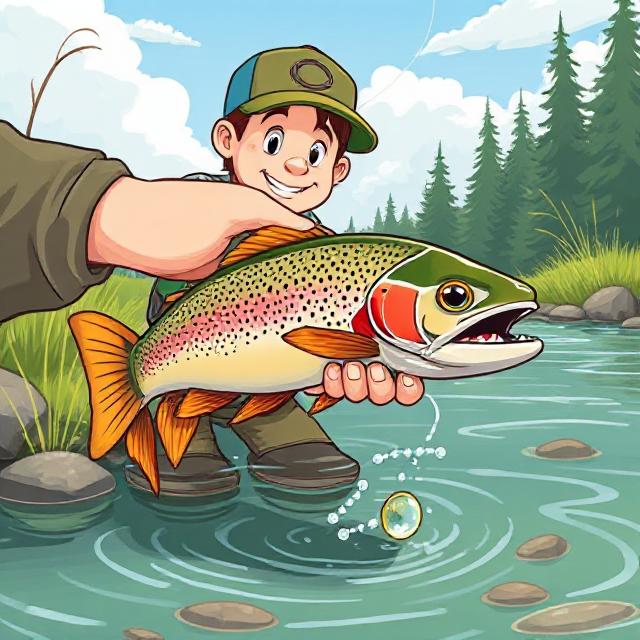A few general suggestions to help in the process of releasing freshwater species. These or similar tactics can be helpful in saltwater senarios also.
In the past, most fishers kept everything they caught; now times have changed. Because of the pressure on most bodies of water, catch and release fishing has become more popular. It can be used to manage fish in fisheries and as a voluntary method among conservative fishers to keep the fish population high. The practice of catch and release is only effective if the fish is handled properly during release.
A general rule is to land fish as fast as possible; fighting with them for too long will exhaust it and cause a build up of harmful lactic acids in its blood. The fish might seem to be fine when it swims away but it could die later from this build-up. Choose a fishing line with a pound-test rating that allows you to put a lot of pressure on the fish without breaking the line.
Do not handle the fish by hand for long periods of time. The best practice is to use the water-release method, discussed here and removing the hook from the fish while it is still in the water. If you have to hold a fish to unhook it or to take a picture wet your hands first. This will prevent the protective layer of slime coating the fish to come off.
Limit the time the fish spends out of the water. If the hook becomes too difficult to remove and you have to hold the fish out of the water, dunk it back into the water periodically. Do not rip out a hook if it is lodged too deep or if it is in the fish’s throat of stomach. Instead, cut the line. Fish have strong enough digestive acids to dissolve a metal hook after a short period of time.
Make sure a fish is ready to be released before releasing it. Cradle the fish gently under the belly in the water and make sure it can swim freely. If a fish cannot right itself or they do not have strong gill movement, be patient and give them time to recover.
Other tips and tricks:
Grab bass and other non-toothy fish by the lower jaw. If you are going to jaw-hold a fish make sure you are not at an angel because it can severely injure the fish. Use a fine mesh cradle instead of a net when you need to land larger fish. A cradle will prevent movement but will keep a fish from injuring itself or getting hooks tangled in the mesh. Try to remove hooks when a fish is still in the water. To make water-release easier use a hook with a barb pinched down. Hold bigger fish horizontally with one hand in front of its tail and the other beneath its belly. If you lift a larger fish by the gills to measure or weigh it, you could cause rips and tears to the gill arch. Gently rock a fish back and forth to revive it. When it can swim from your hands and stay upright, let it go. When you release a fish, keep its head facing a moderate current of the river or stream. A strong indicator that a fish is ready to be released is strong gill movement.
Releasing fish is good practice to keep lakes rivers and other bodies of water full. If you insist on keeping your catch, make sure you stay within fishing laws for your area. Keeping the fish population high will allow future generations to enjoy the sport and will ensure you can enjoy fishing for as long as you can hold a rod.
One Comment
Leave a Reply
You must be logged in to post a comment.








Welcome to PEETZ Canada. Logged-in community members can post their comments on select blog topics. We welcome your constructive feedback and comments & suggestions. Please stay on topic in your dialogue.